The Highly Distorted Supernova Remnant Shown In This Image May Contain The Most Recent Black Hole Formed
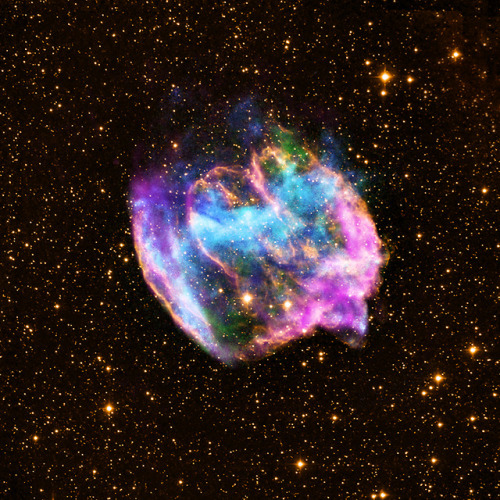
The highly distorted supernova remnant shown in this image may contain the most recent black hole formed in the Milky Way galaxy. The image combines X-rays from NASA’s Chandra X-ray Observatory in blue and green, radio data from the NSF’s Very Large Array in pink, and infrared data from Caltech’s Palomar Observatory in yellow.
Credits: X-ray: NASA/CXC/MIT/L.Lopez et al; Infrared: Palomar; Radio: NSF/NRAO/VLA
More Posts from Astrosciencechick and Others

Orion’s Belt Rises Through the Atmosphere (desktop/laptop) Click the image to download the correct size for your desktop or laptop in high resolution

Chandra/Hubble/Spitzer X-Ray/Visible/Infrared Image of M82.
Credit: NASA, ESA, CXC and JPL-Caltech




I did some drawings on my ipad using the goodnotes app and referencing google images.
Good afternoon, the academic culture of “if you’re not overworking, you don’t deserve success” is unhealthy.
It’s International Asteroid Day!
There are more than 700,000 known asteroids, but how much do you know about these rocky remnants left over from the birth of our solar system 4.6 billion years ago?

Today, June 30 is International Asteroid Day. Here are some things to know about our fascinating space rubble.
1. A Place in Space
Asteroids—named by British astronomer William Herschel from the Greek expression meaning “star-like"—are rocky, airless worlds that are too small to be called planets. But what they might lack in size they certainly make up for in number: An estimated 1.1 to 1.9 million asteroids larger than 1 kilometer are in the Main Belt between the orbits of Mars and Jupiter. And there are millions more that are smaller in size. Asteroids range in size from Vesta—the largest at about 329 miles (529 kilometers) wide—to bodies that are just a few feet across.

2. What Lies Beneath
Asteroids are generally categorized into three types: carbon-rich, silicate, or metallic, or some combination of the three. Why the different types? It all comes down to how far from the sun they formed. Some experienced high temperatures and partly melted, with iron sinking to the center and volcanic lava forced to the surface. The asteroid Vesta is one example we know of today.
3. Small Overall
If all of the asteroids were combined into a ball, they would still be much smaller than the Earth’s moon.
4. Except for a Big One
In 1801, Giuseppe Piazzi discovered the first and then-largest asteroid, Ceres, orbiting between Mars and Jupiter. Ceres is so large that it encompasses about one-fourth of the estimated total mass of all the asteroids in the asteroid belt. In 2006, its classification changed from asteroid to as a dwarf planet.

5. Mission to a Metal World
NASA’s Psyche mission will launch in 2022 to explore an all-metal asteroid—what could be the core of an early planet—for the very first time. And in October 2021, the Lucy mission will be the first to visit Jupiter’s swarms of Trojan asteroids.

6. Near-Earth Asteroids
The term ‘near’ in near-Earth asteroid is actually a misnomer; most of these bodies do not come close to Earth at all. By definition, a near-Earth asteroid is an asteroid that comes within 28 million miles (44 million km) of Earth’s orbit. As of June 19, 2017, there are 16,209 known near-Earth asteroids, with 1,803 classified as potentially hazardous asteroids (those that could someday pose a threat to Earth).
7. Comin’ in Hot
About once a year, a car-sized asteroid hits Earth’s atmosphere, creates an impressive fireball, and burns up before reaching the surface.
8. But We’re Keeping an Eye Out
Ground-based observatories and facilities such as Pan-STARRS, the Catalina Sky Survey, and ATLAS are constantly on the hunt to detect near-Earth asteroids. NASA also has a small infrared observatory in orbit about the Earth: NEOWISE. In addition to detecting asteroids and comets, NEOWISE also characterizes these small bodies.

9. Buddy System
Roughly one-sixth of the asteroid population have a small companion moon (some even have two moons). The first discovery of an asteroid-moon system was of asteroid Ida and its moon Dactyl in 1993.
10. Earthly Visitors

Several NASA space missions have flown to and observed asteroids. The NEAR Shoemaker mission landed on asteroid Eros in 2001 and NASA’s Dawn mission was the first mission to orbit an asteroid in 2011. In 2005, the Japanese spacecraft Hayabusa landed on asteroid Itokawa. Currently, NASA’s OSIRIS-REx is en route to a near-Earth asteroid called Bennu; it will bring a small sample back to Earth for study.
Make sure to follow us on Tumblr for your regular dose of space: http://nasa.tumblr.com

Comet Jacques Piercing the Heart and Soul Nebulae
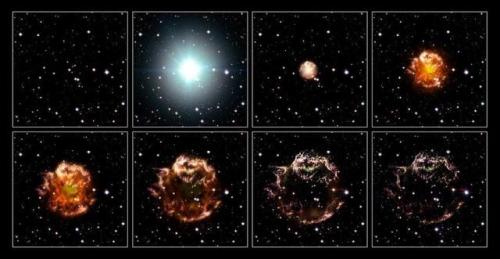
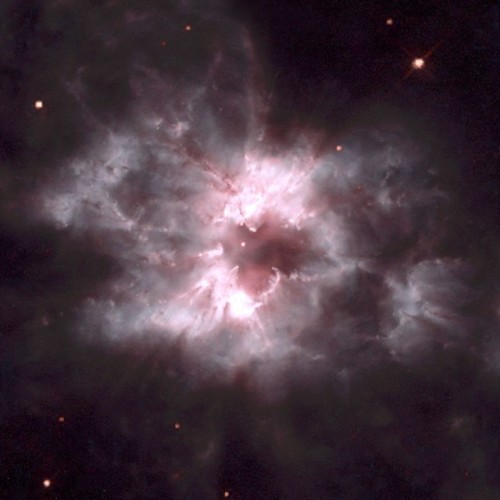
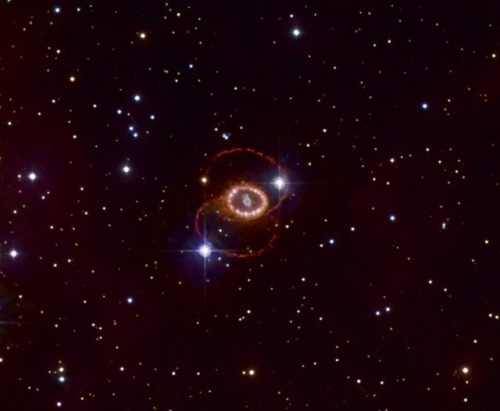

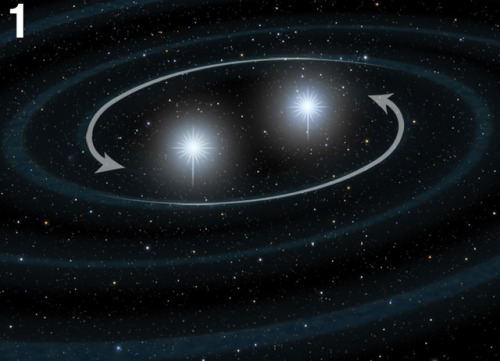
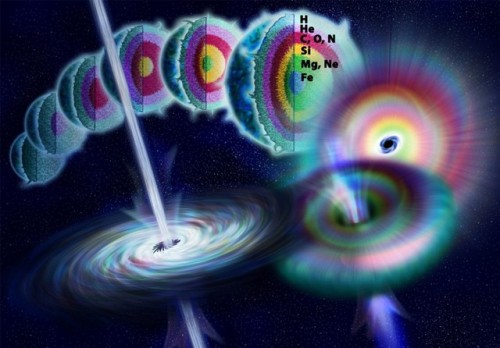
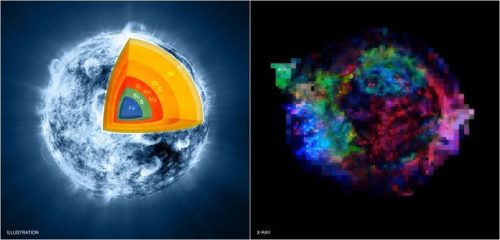
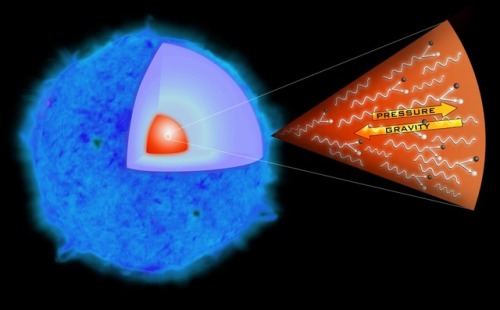
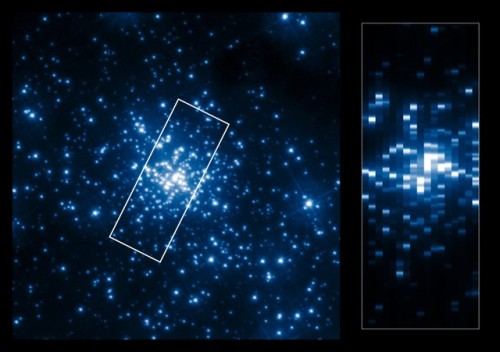

These Are The 6 Different Ways To Make A Supernova
“Yet, if you cross a certain mass threshold, you overcome that quantum barrier, and that triggers a runaway fusion reaction, destroying the white dwarfs and leading to a different class of supernova: a thermal runaway supernova.
So, we’ve got core collapse supernovae and thermal runaway supernovae. Does that mean that there are only two classes?
Hardly. There’s more than one way to make both a thermal runaway and a core collapse supernova, and each mechanism or method has properties that are wholly unique to it. Here are the six ways to make a supernova, starting with the least-massive trigger and going up from there.”
So, you’ve got a star, and you want to trigger a supernova with it? Great! Every star that ever gets made in the Universe has the possibility of going supernova. If your star is born with more than about 8 solar masses, it’s practically an inevitability that a supernova will ensue, and that it will be a core-collapse supernova at that. But there are four independent ways to make that happen, and only one of them is the conventional way you probably think about it. If your star has less than 8 solar masses, though, it ends its life in a white dwarf, but that’s not necessarily the end. White dwarfs can gain enough mass, through two different known mechanisms, to someday go supernova as well.
There are six different ways to make a supernova, and each one is spectacular. Which one is your favorite?





‘That was a quick flight’: How astronauts kept ice cool while their rocket malfunctioned at 4,970mph and plummeted back to Earth in harrowing 7G 'ballistic re-entry’ before hugging their loved-ones on the landing pad as Russia opens CRIMINAL probe.
Two astronauts kept ice cool as their rocket traveling at thousands of miles an hour malfunctioned on the edge of space while carrying them to the International Space Station, cockpit audio reveals.
Russian Aleksey Ovchinin and American Nick Hague made it back to Earth alive this morning after the booster on their Soyuz rocket broke at 164,000 feet and the rocket automatically turned back during a dramatic 7G 'ballistic re-entry’.
Ovchinin retained an enviable sang-froid as he realised what was happening, after they were rocked violently around in their seats by the force of the booster malfunction.
'An accident with the booster, 2 minutes, 45 seconds. That was a quick flight,’ he said in a calm voice in a streamed video of the incident.
'We’re tightening our seatbelts,’ Ovchinin said on the video.
At that moment the two astronauts were experiencing weightlessness, when in an ordinary launch they should still have been pinned to the back of their seats by the force of the rocket surging upwards at 4,970mph.
Russia says it has opened a criminal investigation and grounded all Soyuz flights. The accident comes weeks after a hole was discovered in the International Space Station amid talk from the Russian space authorities of deliberate sabotage.
Video footage from the launch at the Baikonur Cosmodrome shows a large plume of smoke coming from the rocket at the moment it failed and footage from inside the capsule shows the two astronauts being violently shaken about.
The accident bears similarities to the 1986 Challenger disaster when one of its boosters failed at lift-off causing an explosion that killed seven.
Astronauts have been involved in Soyuz malfunctions twice before, one in 1983 when a crew was forced to eject from a Soyuz rocket as it exploded on the launchpad. In 1975 a Soyuz capsule crashed back to Earth from 90 miles up after a rocket failure, but the crew survived.
The rocket, which was designed in the 1960s, has also had one booster fail in similar fashion to today’s malfunction. In 2002 a booster rocket malfunctioned and the rocket which was carrying a satellite crashed in Kazakhstan killing one person on the ground.
In total Soyuz rockets have been launched 745 times of which 21 have failed. Thirteen of those failures have been since 2010, calling into question the continued reliability of the rocket.
Search and rescue teams were scrambled to the touchdown location as NASA revealed the descent meant the Russian-built Soyuz MS-10 spacecraft had to take 'a sharper angle of landing compared to normal’.
The Russians have suspended Soyuz flights to the space station while they investigate the cause of the booster failure.
The Soyuz is the only way to get people to the space station at the moment but officials insist the astronauts currently on the space station have enough supplies.
NASA rookie Nick Hague and second-time flyer Aleksey Ovchinin of the Russian space agency were setting off for a six-month mission at the International Space Station Thursday, on a relatively rare two-man launch.
A spokesperson for NASA said that rescue teams have now reached Hague and Ovchinin and they’ve been taken out of the capsule and were in 'good condition’.
The craft’s landing engines and parachute system were said to have done their job as normal despite the enormous G-force acting on both the shuttle and crew during the landing.
Shortly after the incident rescue crews and paratroopers were rushed the emergency landing site in the barren Kazakh steppe to provide support for the crew.
NASA had issued a worrying tweet on Thursday morning saying: 'There’s been an issue with the booster from today’s launch. Teams have been in contact with the crew.’
'The capsule is returning via a ballistic descent, which is a sharper angle of landing compared to normal. Search and rescue teams are heading towards the expected touchdown location of the spacecraft and crew.’
Cosmonaut Alexander Volkov commented: 'The guys are lucky that they remained alive. They had reached a good height so it was possible to descend in their capsule.’
More info, pictures, diagrams, videos at this link: https://www.dailymail.co.uk/news/article-6264339/Rocket-launch-booster-malfunction-forces-astronauts-return-Earth-ballistic-entry.html

A neutron star located within the remains of a supernova - known as 1E 0102.2-7219 (E0102) - in the Small Magellanic Cloud located 200,000 light years from Earth. [3985 × 6287]
-
 iwannarunaway-13 liked this · 3 weeks ago
iwannarunaway-13 liked this · 3 weeks ago -
 cliriqstars reblogged this · 4 months ago
cliriqstars reblogged this · 4 months ago -
 zurgy-space reblogged this · 11 months ago
zurgy-space reblogged this · 11 months ago -
 zurgy liked this · 11 months ago
zurgy liked this · 11 months ago -
 darkempressrising liked this · 11 months ago
darkempressrising liked this · 11 months ago -
 thisworldisntrealhoney liked this · 1 year ago
thisworldisntrealhoney liked this · 1 year ago -
 demichrising liked this · 1 year ago
demichrising liked this · 1 year ago -
 e-de-emperatriz reblogged this · 1 year ago
e-de-emperatriz reblogged this · 1 year ago -
 e-de-emperatriz liked this · 1 year ago
e-de-emperatriz liked this · 1 year ago -
 cerealesbians liked this · 2 years ago
cerealesbians liked this · 2 years ago -
 sprrrnova liked this · 2 years ago
sprrrnova liked this · 2 years ago -
 prala reblogged this · 2 years ago
prala reblogged this · 2 years ago -
 prala liked this · 2 years ago
prala liked this · 2 years ago -
 sparkyairstuff liked this · 3 years ago
sparkyairstuff liked this · 3 years ago -
 oneirovroxi reblogged this · 3 years ago
oneirovroxi reblogged this · 3 years ago -
 oneirovroxi liked this · 3 years ago
oneirovroxi liked this · 3 years ago -
 venus-born liked this · 3 years ago
venus-born liked this · 3 years ago -
 femmesea liked this · 3 years ago
femmesea liked this · 3 years ago -
 magnoliaofmedicine liked this · 4 years ago
magnoliaofmedicine liked this · 4 years ago -
 jtsvt13 reblogged this · 4 years ago
jtsvt13 reblogged this · 4 years ago -
 ajthedumbass liked this · 4 years ago
ajthedumbass liked this · 4 years ago -
 nasaadi3 reblogged this · 4 years ago
nasaadi3 reblogged this · 4 years ago -
 nasaadi3 liked this · 4 years ago
nasaadi3 liked this · 4 years ago -
 toodeepforme reblogged this · 4 years ago
toodeepforme reblogged this · 4 years ago -
 ecleticmomma20 reblogged this · 4 years ago
ecleticmomma20 reblogged this · 4 years ago -
 ecleticmomma20 liked this · 4 years ago
ecleticmomma20 liked this · 4 years ago -
 monmonshi liked this · 4 years ago
monmonshi liked this · 4 years ago -
 mggunnarsson liked this · 4 years ago
mggunnarsson liked this · 4 years ago -
 rosinhas-beijinhas liked this · 4 years ago
rosinhas-beijinhas liked this · 4 years ago -
 gandaiar reblogged this · 4 years ago
gandaiar reblogged this · 4 years ago -
 wasted-lov-e reblogged this · 4 years ago
wasted-lov-e reblogged this · 4 years ago -
 vsusanoo reblogged this · 4 years ago
vsusanoo reblogged this · 4 years ago -
 yukamilee liked this · 5 years ago
yukamilee liked this · 5 years ago -
 theinfiniteessence liked this · 5 years ago
theinfiniteessence liked this · 5 years ago -
 witheredlittleflower liked this · 5 years ago
witheredlittleflower liked this · 5 years ago